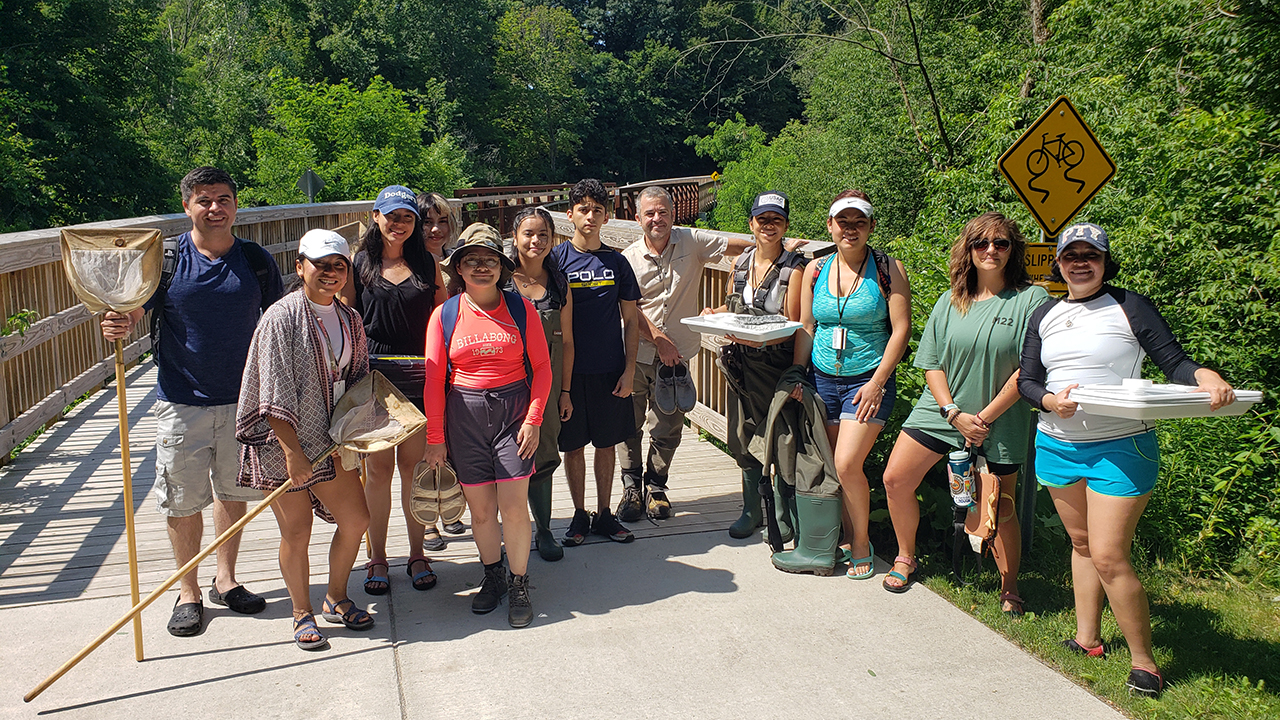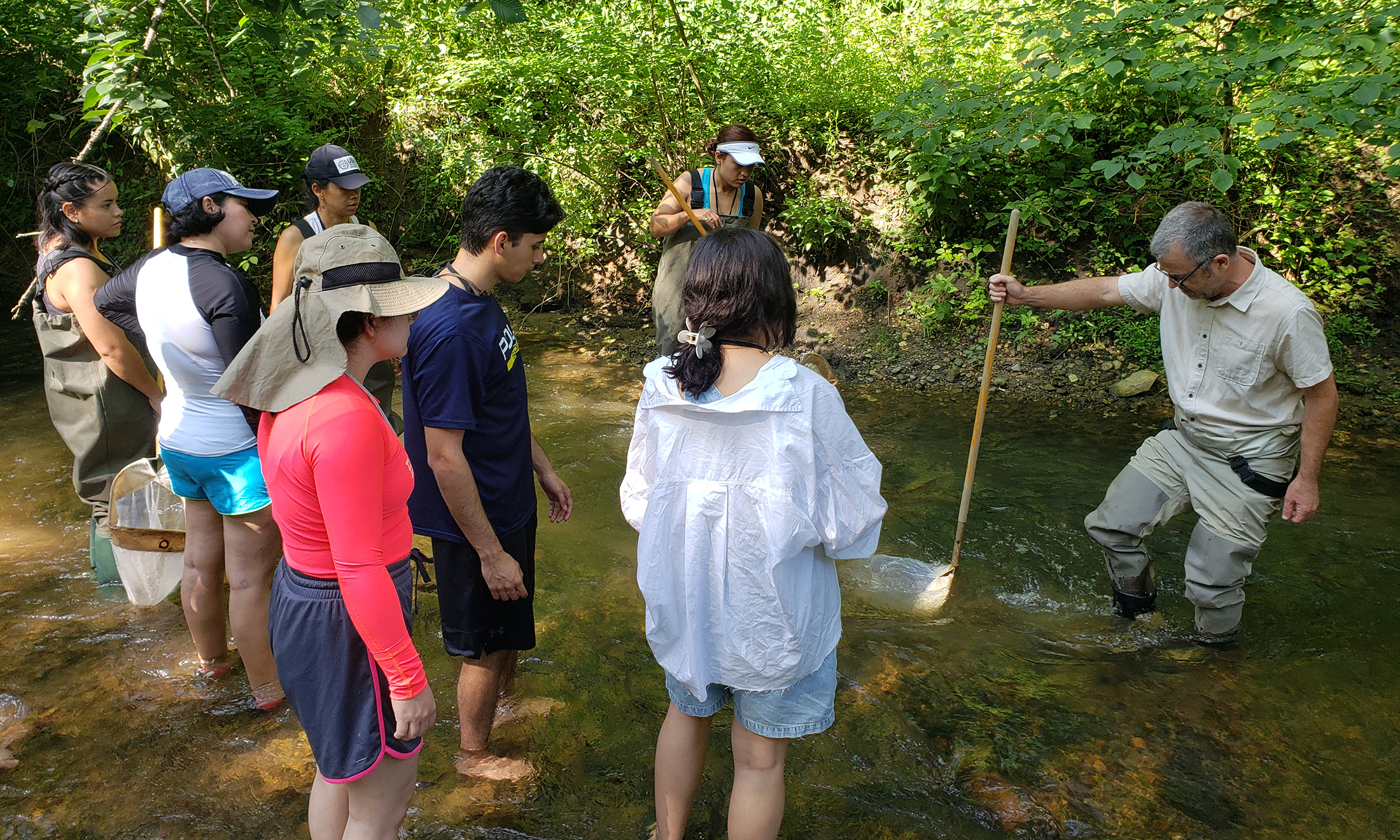A group of students from Guatemala recently visited Oakland University to learn more about freshwater ecology and sustainability in Michigan as part of a collaborative program with OU’s Office of International Education and the Department of Biological Sciences.
“OU students actually visited Guatemala in May as part of a Tropical Field Ecology course, during which they met the students who came to OU this month,” said Scott Tiegs, a professor of biological sciences at OU.
The exchange was sponsored by a grant from the U.S. State Department’s 100,000 Strong in the Americas program, which is meant to increase student mobility in the Western Hemisphere. The $25,000 grant was awarded to OU in 2019 based on a proposal submitted by Tiegs and Alex Zimmerman, director of International Education.
“We had to delay the project until now due to the pandemic, so it was very gratifying to finally be able to bring the students here,” Zimmerman said.
As part of their research, the Guatemalan students visited Paint Creek in Orion Township to collect samples of macroinvertebrates — animals that lack a backbone and are large enough to be seen with the naked eye, including aquatic insects, crayfish, snails, clams, and worms — in order to assess the creek’s water quality.
“By looking at the different species that are present in Paint Creek, we can infer a lot about how healthy an ecosystem it is,” Tiegs said. “Some invertebrates are very sensitive to pollution, so when it is present they will disappear from that stream. Other invertebrates are very tolerant of pollution, so they thrive under those conditions. By looking at the abundance of tolerant versus intolerant invertebrates, we’re able to infer a lot about the health of that stream.”
For many of the Guatemalan students, using macroinvertebrates to assess the quality of the water in the creek was a technique they weren’t familiar with.
“It was a great opportunity for them to learn a new technique,” Tiegs said.
It was also a unique experience for the students because many of the insects and animals they found in Paint Creek aren’t found in Guatemala.
“It was very interesting to see the different species there,” said Guatemalan student Jabel Gómez. “I’m very excited to compare these macroinvertebrates and apply what I learn to my future studies in Guatemala.”
Antonella Fuentes, also from Guatemala, agreed.
“It was very interesting,” she said. “Being there really expanded my knowledge about macroinvertebrates and their role in a healthy ecosystem.”
Elizabeth “Lizz” Parkinson, a doctoral student in Oakland University’s Aquatic Ecology Lab in the Department of Biological Sciences and head of the Freshwater Forum at Cranbrook Institute of Sciences, accompanied Tiegs and the students as the collected the samples from the creek.
“One of the things I hope the students get out of their experience is to see the different types of invertebrates that we have here in Michigan,” she said. “While a lot of these orders of invertebrates are unique to Michigan, some are also found in Guatemala, so there are similarities and differences between what they see here and what we see there, which is great because it connects the freshwater in the two places. Also, they’re able to get a taste of what we do with our students here and how we monitor water quality.”
In addition to collecting samples at Paint Creek, the students also went for a hike at Bald Mountain in Orion Township, and took a trip to Sutton’s Bay near Traverse City, where they went kayaking on Crystal River and climbed the Sleeping Bear Dunes. After returning from Sutton’s Bay, the students had an opportunity to tour a water treatment facility in Pontiac, visit the Cranbrook Institute of Science, and walk around Belle Isle and the Detroit Riverfront.
To learn more about the Office of International Education, https://oakland.edu/ie.
For more information about the Department of Biological Sciences, visit www.oakland.edu/biology.



 July 31, 2023
July 31, 2023







